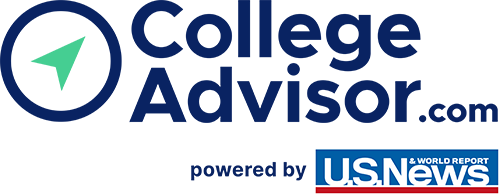
Full Ride Scholarships
Securing full ride scholarships is every future college student’s dream — a debt-free path to earning a degree. In addition to financial freedom, full scholarships often come with added benefits, like individualized mentorship and a built-in community. Given these advantages, it’s no surprise that full ride scholarships can be hard to find (and even harder to win). So, if you’re wondering how to get a full-ride scholarship, you’re in the right place.
There are many ways to secure a full ride scholarship for college. Between colleges with full-ride scholarships, private full ride scholarships, and even government sponsored full scholarships, the opportunities are abundant. It’s just a matter of finding the right fit and meeting the criteria.
Scholarship resources can help you find scholarships that align with your background, interests, and goals. However, it’s important to note that most scholarships available online are not full ride scholarships. Some are full tuition scholarships, while others are partial scholarships. With so many options out there, we’ve created this dedicated resource to help you focus on finding and applying to full ride scholarships.
This guide is all about how to get a full-ride scholarship to college. Specifically, we’ll discuss:
- What full ride scholarships are and what they cover
- The difference between full ride scholarships and full tuition scholarships
- A list of scholarships, plus top colleges with full-ride scholarships
- Tips for how to get a full-ride scholarship
- Where to find scholarships for high school seniors, and more!
But first, let’s talk about why university scholarships are so important in today’s college landscape.
Rising college costs and financial aid
With the cost of college ballooning to record highs, more and more students are weighing the cost versus benefit of attending college. For context, in 2024-25, average tuition and fees were $11,610 for public in-state, $30,780 for public out-of-state, and $43,505 for private nonprofit schools — and those numbers only account for tuition.
Tuition costs alone are high, and they’re only a fraction of what students can expect to pay to attend college. In reality, the total cost of attendance at many top universities is well over $90,000! But that doesn’t mean these prestigious and incredibly expensive colleges are actually out of your price range.
When it comes to the cost of college, it’s important to distinguish between “sticker price” and “net price.” Many colleges with full-ride scholarships have a high sticker price. However, with the help of full ride scholarships, full tuition scholarships, and other federal and university scholarships, plenty of students end up paying only a fraction of the cost.
Another big reason university scholarships are so valuable is that, unlike loans, you don’t have to pay them back. While low-interest government loans have more favorable terms compared to private loans, borrowing money still means you’ll be paying it back — with interest — which can cause long-term financial strain. Full ride scholarships help you avoid loans completely, giving you the best chance to get a high return on your college investment.
What are full ride scholarships?
Knowing how to get a full-ride scholarship starts with understanding its benefits. Full ride scholarships cover your total cost of attendance — tuition, fees, and room and board are all paid for by full scholarships. In addition to covering your tuition and cost of living, some full scholarships also cover additional expenses such as travel, books, and other school supplies.
Unlike partial scholarships, full scholarships completely eliminate the financial burden of a college education. Because of the substantial benefits, they are often reserved for students who wouldn’t otherwise be able to attend college. Beyond looking for students with financial need, full scholarships also look for candidates who will make the most of their college education. As such, criteria for full scholarships usually include academic excellence as well as other achievements in leadership, community service, or a particular field of study.
Do full ride scholarships cover all four-years?

Yes, most full ride scholarships cover all four years of an undergraduate degree program. However, renewing your scholarship may depend on meeting certain eligibility standards. For instance, you may need to maintain a minimum GPA, participate in scholarship-related activities, or complete a certain number of service requirements.
If your studies take longer than four years (if you decide to double major, for instance), you may be responsible for covering the cost of your fifth year. Alternatively, if you graduate early, your scholarship may be suspended, meaning you would not receive another year of scholarship funding after you graduate.
How do full ride scholarships impact your college experience?
Colleges with full-ride scholarships often offer unique opportunities for scholarship recipients to engage with exclusive scholarship resources. For instance, you may have the opportunity to pursue an internship, study abroad, or complete your own research project, fully funded. You might also have the chance to network with other scholarship recipients, mentors and advisers, and experts in your field.
Full ride scholarships remove financial stress, allowing students to focus on academics and extracurriculars. However, scholarship recipients also face the added pressure of maintaining eligibility standards. While the reality of attending college on a scholarship can feel precarious, it’s important to remember that full ride scholarships aren’t awarded without good reason. Both your school and your scholarship community will provide plenty of resources to help support you throughout your college journey.
Types of full ride scholarships
Before we start looking at specific scholarships for high school seniors, let’s define four types of full ride scholarships:
4 Types of Full Ride Scholarships

Merit-based
One of the most common factors in scholarship decisions is academics. As such, a major factor in how to get a full-ride scholarship is maintaining a high GPA, excelling in standardized tests, and demonstrating your achievements through scholarship essays.
Need-based
Part of how to get a full-ride scholarship isn’t up to you, but rather your family’s financial situation. That’s because many colleges with full-ride scholarships only offer full scholarships to students who need the most help.
Service-based
Full scholarships aren’t just about grades. Being involved in extracurricular activities, community service, and leadership roles also play a crucial role in how to get a full-ride scholarship.
Speciality scholarships
You can find scholarship resources dedicated to specific majors, certain demographics, and even government scholarships. For instance, here’s a list of scholarships sponsored by the Department of Defense.
Learning how to get a full-ride scholarship means doing thorough research to find scholarships that fit your background. Creating a personalized list of scholarships will make it easier to focus your efforts on the opportunities you have the best chance at winning.
Full Ride Scholarships vs. Tuition Scholarships
When exploring scholarship resources, you might come across the term “full tuition scholarship.” While full tuition scholarships and full ride scholarships may sound similar, there is a distinction between the two. Full tuition scholarships only cover tuition — leaving you to cover the cost of your room and board on top of all your other college expenses.
While these are certainly worth adding to your list of scholarships, full tuition scholarships can still leave you with a hefty bill to pay. For example, at NYU, students with a full tuition scholarship would still need to pay $25,526 per year for food and housing, along with school supplies, transportation, health insurance, and other personal expenses.
Of course, full tuition scholarships can be combined with other grants and scholarships, including federal aid and other university scholarships. Or you could find ways to save on your other college expenses. For example, if you are planning to commute from home, full tuition scholarships could essentially equal the award of a full ride scholarship. With a true full ride scholarship, however, you won’t have to worry about minimizing your costs or piecing together different types of financial aid.
Are athletic scholarships full ride?
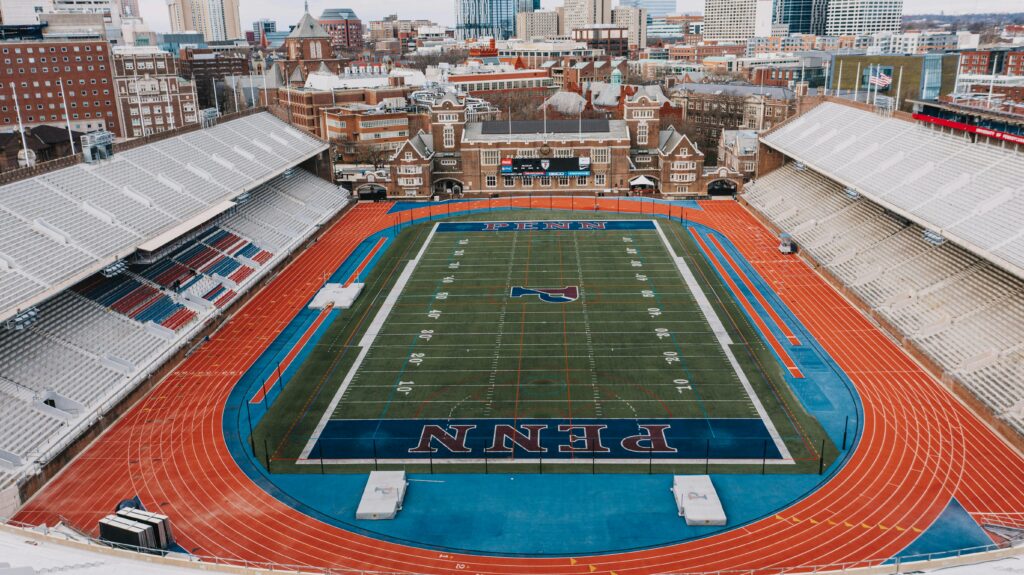
If you’re a student athlete, you might be wondering how to get a full-ride scholarship to play sports in college. While it’s possible to attend college for free as a student athlete, athletic scholarships are more commonly partial scholarships that do not cover the full cost of attendance. For example, the average scholarship for NCAA DI athletes is $19,000 for women’s basketball players and $24,058 for football players.
Based on these averages, athletic scholarships are much closer to full tuition scholarships than full ride scholarships. Why aren’t there more full ride scholarships for athletes? For one thing, the availability of athletic scholarships is dependent on program funding and scholarship limits. However, this doesn’t mean student athletes can’t attend college on a full ride.
While there aren’t many colleges with full-ride scholarships specifically for athletes, many schools will combine various scholarship resources to make college affordable. A school might offer additional university scholarships or grants, for instance, to ensure a student-athlete has the means to attend. Like other scholarship recipients, student-athletes must maintain certain eligibility requirements to keep those scholarships, including sustained athletic and academic performance.
7 Full Ride Scholarships for High School Seniors
Still not sure how to get a full-ride scholarship? The first step is simple — you need to know about them! If you feel like you’re struggling to find scholarships that actually cover the full cost of a college education, check out this list of scholarships for high schoolers.
7 Full Ride Scholarships

1. QuestBridge National College Match Scholarship
The QuestBridge National College Match Program is for students who, despite experiencing financial hardship, have excelled academically. Instead of simply awarding scholars with funding to attend college, this full ride scholarship actually connects students with their future college. QuestBridge has over 50 participating partner schools, including many incredible top colleges and universities, such as CalTech, Dartmouth, Harvard, Johns Hopkins, MIT, Northwestern, Rice, and Williams College.
To become a QuestBridge Match scholar, students submit an application to the National College Match program along with their top 15 QuestBridge partner schools. Students selected as finalists must then submit additional application materials to each school on their list. If matched, students will receive admission to their top ranked school and a full four-year scholarship including books, supplies, and travel expenses.
2. The Gates Scholarship
This scholarship is for pell grant-eligible students from historically marginalized groups. The Gates Scholarship is a last-dollar scholarship, which means the award will pay for the recipient’s total cost of attendance not covered by financial aid. As such, students who receive a high amount of government and institutional grants may receive a lower scholarship amount, though the entire cost of attendance will still be covered.
Applicants must be in good academic standing, ranking in the top 10% of their class with a minimum GPA of 3.3. Strong candidates for the Gates Scholarship demonstrate exceptional leadership qualities, including emotional maturity and perseverance in the face of challenges.
3. USDA 1890 National Scholars Program
If agriculture or food have caught your interest, consider applying to this government scholarship. The 1890 National Scholars Program aims to support students from rural and underserved communities interested in agriculture, food, natural resources, and more. Other related disciplines include forestry, soil conservation, non-medical biological sciences, and computer science.
This scholarship program partners with 19 land-grant universities across the country, including Alabama A&M, Delaware State, Kentucky State, South Carolina State, Southern University, and Virginia State. When applying, you’ll need to submit two essays: one about your interest in the scholarship and another explaining your interest in your chosen field.
4. Flinn Scholars Program
While some full ride scholarships are school specific, this scholarship is state specific. The Flinn Scholarship is dedicated to Arizona residents planning to earn their degree at an in-state public university. This includes Arizona State University, Northern Arizona University, and the University of Arizona. In addition to covering tuition, fees, housing, and meals, the Flinn Scholarship also guarantees an honors college education and funding for a study-abroad experience.
To apply, students must have above a 3.5 GPA, rank in the top 5% of their graduating class, and meet minimum score requirements for the ACT or SAT. On top of these academic requirements, applicants must also demonstrate their involvement in extracurriculars through three short essays and two recommendation letters.
5. Jack Kent Cooke College Scholarship Program
Next is the Cooke College Scholarship Program. This scholarship is for high-achieving students with demonstrated financial need. Like the Gates scholarship, the Cooke scholars program is a last-dollar scholarship, meaning it will cover the cost of college after institutional aid. In addition to funding, scholars receive support and personal advising throughout college and the opportunity to connect with other recipients and alumni of the scholarship program.
This scholarship program is open to students of all majors. However, the majority of applicants have held a leadership role, performed community service, and have a GPA around 3.97. Unique to this scholarship, students actually apply through the Common App! Adding the Jack Kent Cooke Foundation as one of your “schools” will give you access to scholarship specific questions and essays.
6. Ronald V. Dellums SMART Scholarship
This government scholarship is more than just a full ride — it’s a pathway towards a career in STEM. On top of being a full tuition scholarship, the Dellums SMART scholarship offers students annual stipends, internships, and a guaranteed position with the Department of Defense after graduation. Relevant areas of study for SMART applicants include artificial intelligence, biotechnology, quantum science, and renewable energy generation and storage.
To apply, students must indicate their area of study and choose a SMART Sponsoring Facility. This facility is where students will complete their internships and work after graduation. Students must also submit a personal statement and information about their past educational, professional, leadership, and volunteer experiences. If you think you might be ready to commit to a role at the DoD after college, you can review the entire application process online.
7. Stamps Scholars Program
Many colleges with full-ride scholarships offer incoming freshmen the chance to become a Stamps Scholar. In fact, Stamps scholarships are offered at 36 partner schools across the U.S., including Georgia Tech, Tulane, Ohio State, Morehouse College, UConn, Notre Dame, and the University of Chicago. Recipients typically receive a full ride scholarship, along with additional scholarship resources to fund educational enrichment activities.
The Stamps application process varies by school. For instance, at Georgia Tech, semifinalists for the Stamps President’s Scholarship are chosen based on their first-year Georgia Tech application. In this case, there is no separate application process. At Ohio State, on the other hand, students will need to submit an additional application essay and video introduction for the Stamps Eminence Scholarship, and apply to Ohio State’s honors or scholars program.
***Bonus Scholarship for High School Juniors: Coolidge Scholarship
While this scholarship isn’t for high school seniors, it’s too prestigious of a full ride scholarship not to mention. The Coolidge Scholarship, open to high school juniors, is primarily a merit-scholarship. That is, students must have taken the most advanced coursework available to them and be able to demonstrate their intellectual curiosity. Additional selection criteria include an interest in public policy and service to others.
Coolidge finalists will attend a Finalist Interview Weekend, where they interview with a formal jury. Winners receive a full ride scholarship to use at whichever school they end up applying to and enrolling in during senior year.
If none of these full ride scholarships seem like a good fit for you, don’t worry. You can also find scholarships through the schools on your college list! Up next, we’re highlighting nine colleges with full-ride scholarships.
Colleges with full-ride scholarships
Now that we’ve thoroughly discussed the meaning and importance of full ride scholarships, let’s look at some colleges with full-ride scholarships for high school seniors. Like the examples listed above, colleges with full-ride scholarships often offer experiences and opportunities beyond just full tuition scholarships.
Here, we’ve listed nine colleges with full-ride scholarships and some details about their programs. Since knowing how to get a full-ride scholarship is also important, we’ve also included general application requirements.
Universities with Full Ride Scholarships
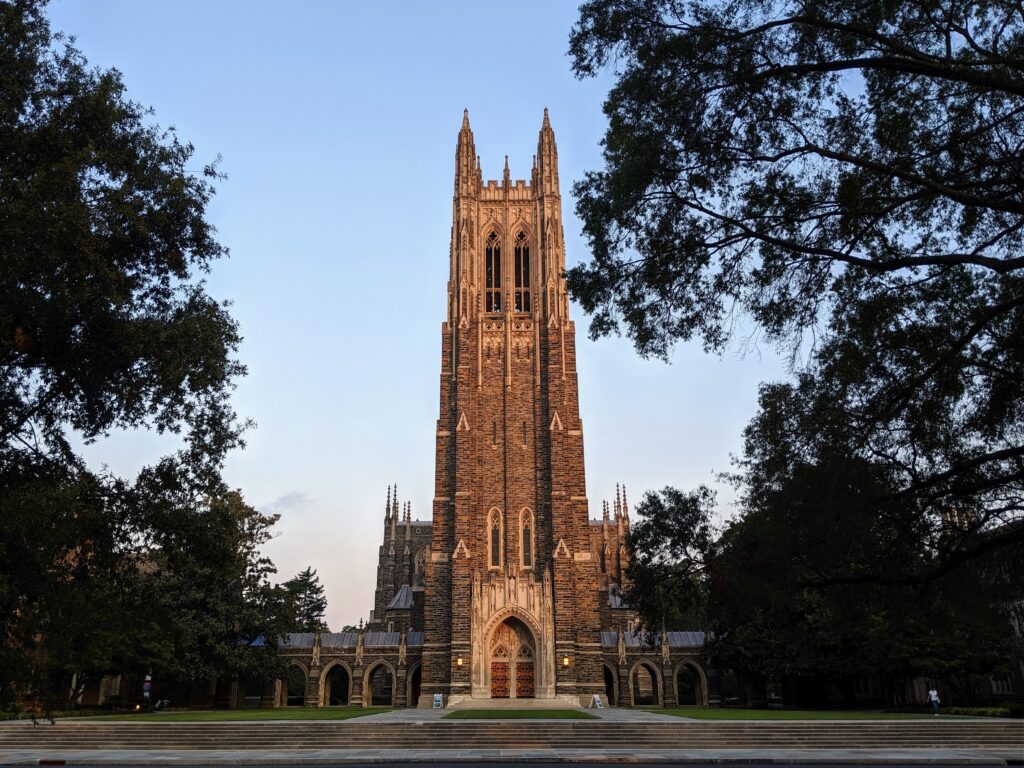
Duke University & University of North Carolina at Chapel Hill
The Robertson Scholars Leadership Program bridges Duke University and UNC-Chapel Hill, providing access to resources on both campuses. This generous full-ride scholarship covers tuition, room and board, and most fees at Duke and UNC-Chapel Hill for eight semesters. Additionally, Robertson Scholars receive funding for up to three summer experiences, two semesters studying abroad, and conferences during the academic year.
Applicants must submit a separate Robertson application in the same year as they apply to Duke and/or UNC-Chapel Hill. While they may apply to Duke/UNC with any application deadline, the Robertson application is due in mid-November.
University of Virginia
The Jefferson Scholars Program and Walentas Scholars Program are two full ride scholarships offered by UVA. They’re largely the same: both are full scholarships that cover tuition, room and board, books, and other fees for four years. Like many other program-based full ride scholarships, they offer academic, professional, and extracurricular enrichment like lectures and exploratory opportunities.
The key difference is that the Walentas Scholars Program is exclusively for first-generation college students. These programs require all applicants to be nominated by their school, after which applications are due by the end of November.
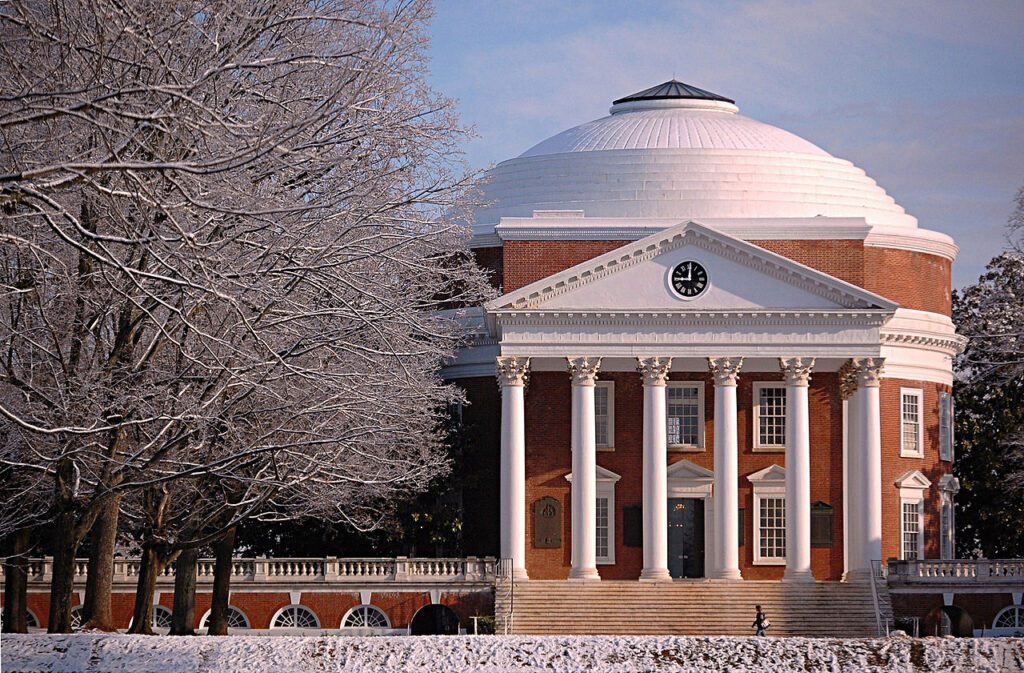
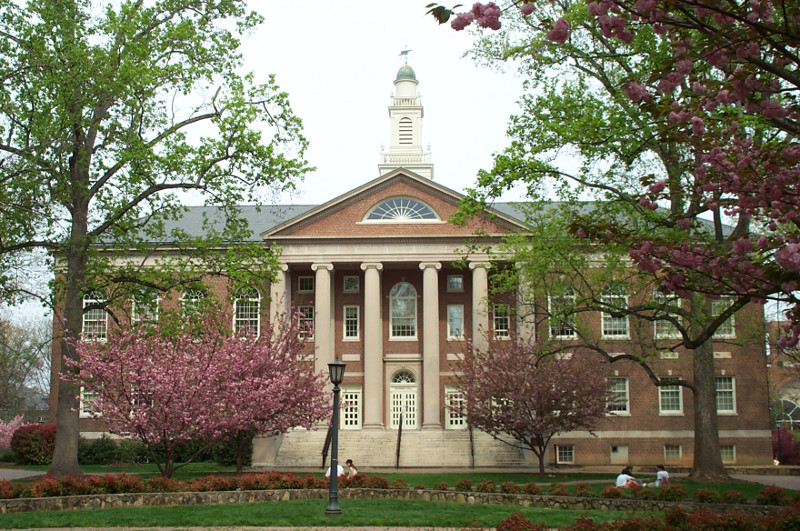
Wake Forest University
The Nancy Susan Reynolds Scholarship is one of several full ride scholarships available to cover tuition and housing for incoming students. While it doesn’t explicitly cover books and fees like other full scholarships, this scholarship provides $3,400 for personal expenses. Scholarship resources also include up to $5,000 for summer opportunities like research, study, or travel.
All Wake Forest Applicants are automatically considered for this and other full ride scholarships; no separate application is required. Potential scholars are judged on academic achievements as well as creative and leadership potential.
Michigan State University
Compared to several other full scholarships listed here, the MSU Alumni Distinguished Scholarship is intense. Applicants who submit their MSU application by November 1st are automatically considered. Top applicants are then invited to the MSU Alumni Distinguished Scholarship competition.
The competition comprises essays, a general knowledge exam, and finalist interviews. In exchange, the scholarship is very generous: full tuition, housing, food, fees, and an additional $1,000 annually for four years.
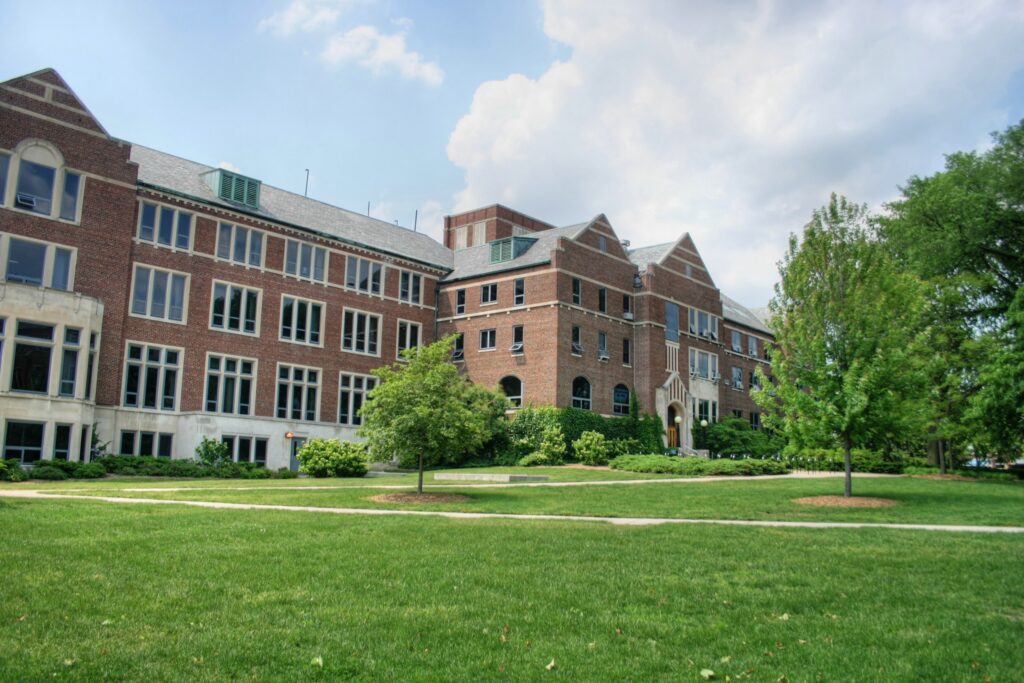
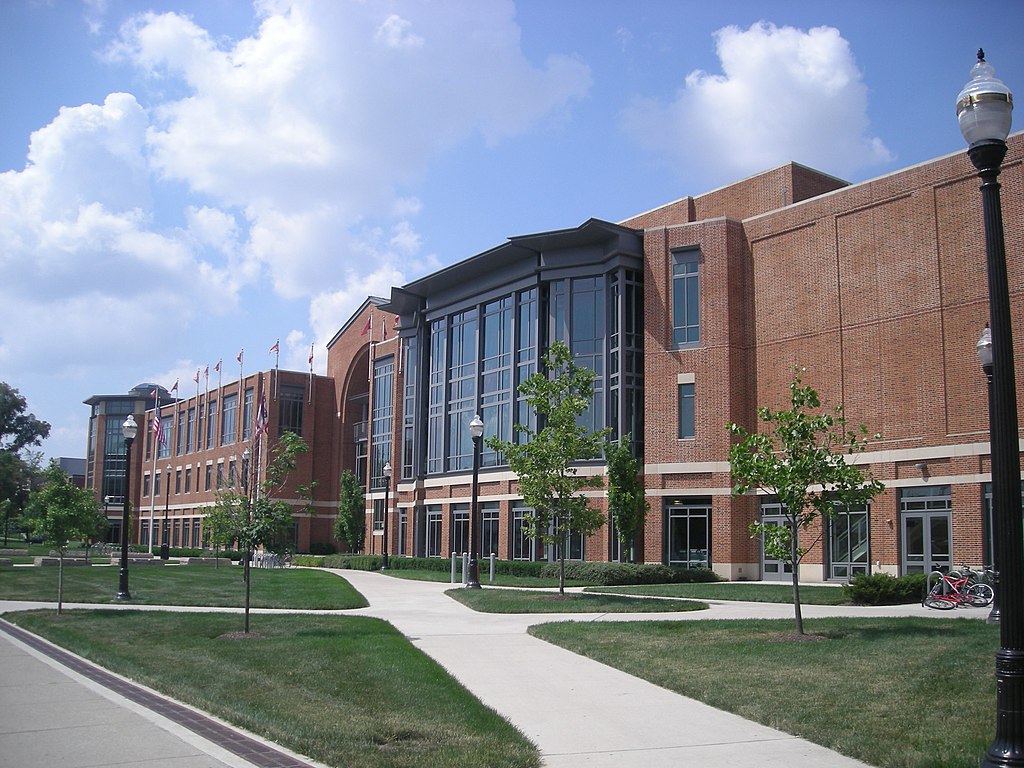
Ohio State University
The Morrill Scholarship Program at OSU has three award levels, only the highest — Distinction — provides full ride scholarships. Like other true full scholarships, the Morrill Scholarship covers the full cost of attendance, not just tuition.
Morrill Scholars are selected based on academic excellence as well as leadership, service, and working toward social justice. However, due to recent opposition to diversity, equity, and inclusion initiatives by state and federal governments, the Morrill Scholarship is changing. OSU’s Office of Diversity and Inclusion, which manages the program, is being closed; however, Morrill will remain — albeit with different acceptance criteria. Check the OSU website for updated information.
Clemson University
The National Scholars Program, like other full ride scholarships, covers tuition, housing, food, fees, and other expenses. Other scholarship resources for recipients include exclusive development opportunities like mentorship and experiential learning, and access to an extensive alumni network.
To be considered for the NSP, applicants must meet Clemson’s Early Action deadline and Honors Priority application deadline in mid-October.
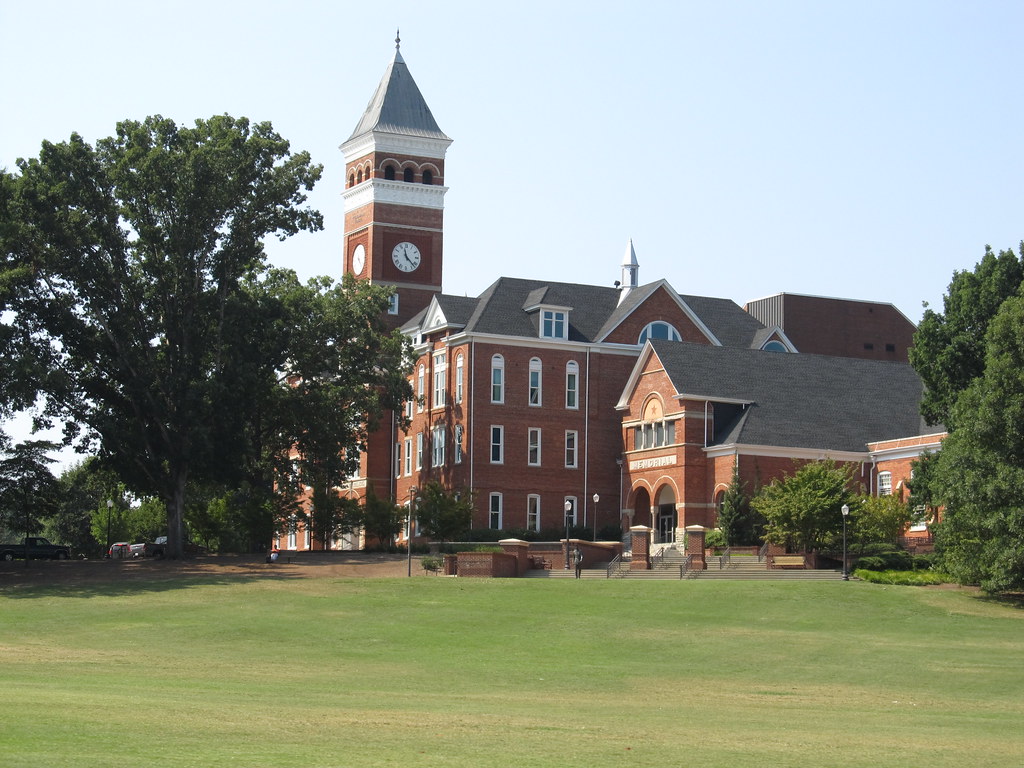
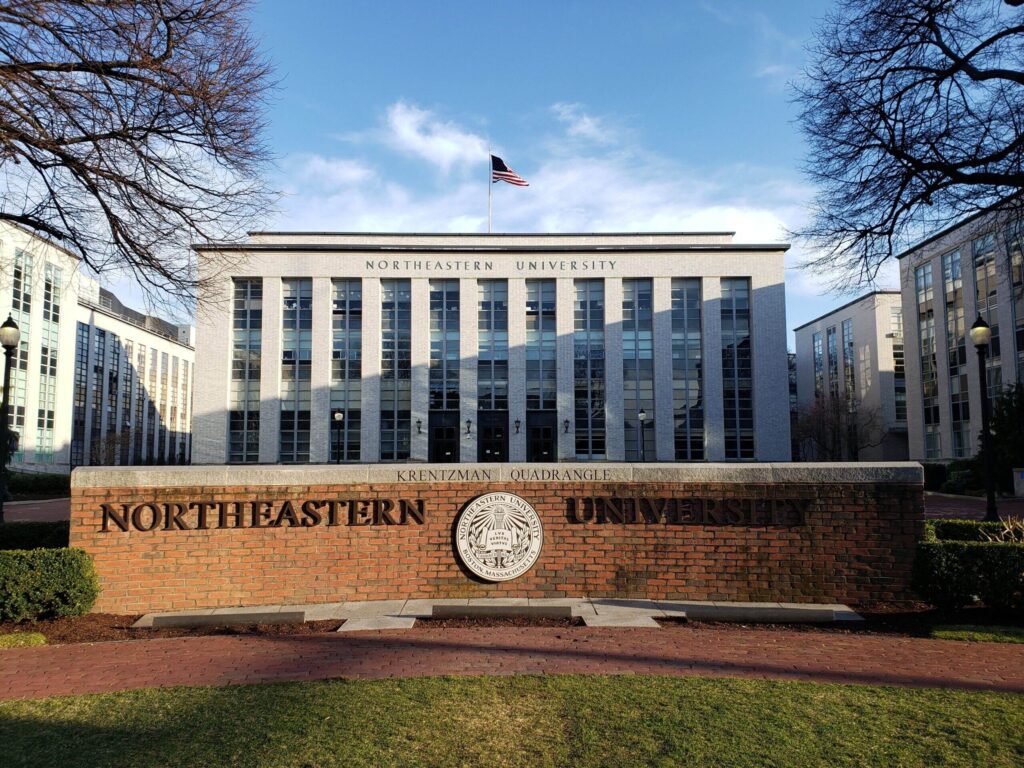
Northeastern University
The Torch Scholars Program supports bright first-generation university students with full scholarships covering tuition, housing, books, and fees. On top of financial resources, Torch Scholars receive intensive mentoring, advising, and planning support.
Students must be nominated and selected based on academic excellence, financial need, and leadership experience after applying with any deadline. Then, they must complete requirements like writing essays and sitting for interviews, and also take several assessments. Out of hundreds of students each year, only 15 will ultimately be selected as Torch Scholars.
University of Rochester
Last on this list of scholarships is the Handler Scholarship, the most prestigious scholarship at the University of Rochester. Like other full ride scholarships, the Handler Scholarship funds the cost of college, from tuition to transportation and personal expenses. Development opportunities, special funding for enrichment, and access to the Handler alumni network are some of the benefits Handler students receive.
Prospective Handler students must be nominated by their school or guidance counselor, and they should submit their application by December 1st.
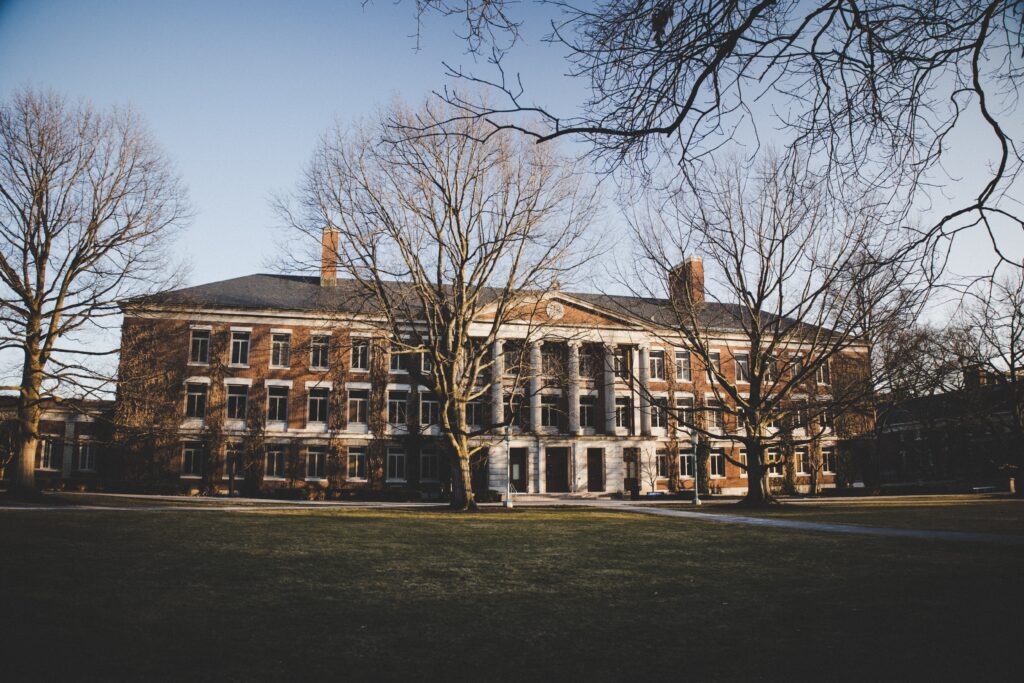
As you can see, there are many colleges with full-ride scholarships, from large to small and public to private. For students aiming to apply to colleges with full-ride scholarships or full tuition scholarships, there’s something for everyone. Nevertheless, you should never assume a college offers full ride scholarships; do your research to see if they have full ride scholarships listed on their website.
All of the full ride scholarships listed above target students with strong records of excellence in and out of the classroom. Knowing how to get a full-ride scholarship means knowing how strong your application is — and how strong it’s supposed to be.
Are full ride scholarships hard to get?
Scholarships for high school seniors are always competitive. However, full ride scholarships are particularly high demand — they’re worth tens (or even hundreds!) of thousands of dollars. Because they go a step further than full tuition scholarships, full ride scholarships are extremely competitive. Colleges with full-ride scholarships may receive hundreds to thousands of nominations and applications every year. Furthermore, because of their rigorous criteria, many applicants are excellent in their own right.
Ideal candidates for these prestigious university scholarships have superb academic performance, as is to be expected. Many have enrolled in college-level courses through dual-enrollment or their local equivalent. Outside of school, many have glowing extracurricular profiles, with long-term commitments and leadership positions to boot. Finally, scholarship application essays, when they’re required, can make or break an application by speaking directly to a student’s potential. Anyone who knows how to get a full-ride scholarship knows that essays are critical.
Applying to full ride scholarships
Perhaps the easiest part of learning how to get a full-ride scholarship is researching available university scholarships. Once you’ve determined what full scholarships are available at schools on your college list, check your eligibility. For example, certain full ride scholarships are only available to first-generation students or require a nomination. If you find scholarships you’re eligible for, you can gather your documents, write your essays, and submit your application. Many full ride scholarships require finalists to sit for interviews, so you should prepare for those after submitting applications.
Application documents for full ride scholarships aren’t very different from those of other college applications. Of course, applications require transcripts, recommendation letters, and essays; standardized test scores, even when optional, should be submitted if they’re strong. Financial statements are also a common part of the application process when seeking university scholarships.
Throughout the application process, it’s paramount to stay aware of application deadlines. While some full ride scholarships allow applicants to send their materials by the regular decision deadline, others are much earlier. Do you remember how to get a full-ride scholarship to Clemson? It starts with meeting the priority application deadline — in October! Stay organized, and don’t let deadlines catch you by surprise.
Do full ride scholarships have their own application?

The majority of full ride scholarships have a separate application. These separate applications for full scholarships may require their own essays or other application materials. Make sure you start your admissions journey early so that you have plenty of time to understand and collect your materials.
With that said, not all full ride scholarships have their own application. Some institutions automatically consider all applicants for various university scholarships. Yet others may consider applicants for full ride scholarships and invite them to complete a separate application later. Often, this is the reasoning behind early or priority deadlines for full ride scholarships.
What GPA do you need to get a full scholarship?
As previously mentioned, university scholarships often have high GPA thresholds, though it’s possible to find scholarships without such requirements. Athletic scholarships for high school seniors commonly have GPA minimums of 2.5 to 3.0, for instance. Meanwhile, many merit-based full tuition scholarships and full ride scholarships have GPA requirements of 3.5 to 4.0.
Furthermore, colleges with full-ride scholarships usually impose GPA requirements to renew the scholarship. Full ride scholarships are typically assessed for renewal every semester or academic year, with low performance risking revocation of aid. Therefore, if you’re aiming for full scholarships, you should know that you need a strong showing through graduation.
When applying for full ride scholarships, you may find some with other requirements, as well. The list of scholarships with thresholds for standardized test scores or class rank may be longer than you think. Government scholarships may have residency or visa requirements. When researching full scholarships, dig deep into scholarship resources to understand all the requirements and how to meet them.
Writing standout scholarship essays
After meeting eligibility criteria, writing strong essays is perhaps the most important answer to how to get a full-ride scholarship. Full tuition scholarships and full ride scholarships are awarded to students who are not just smart, but show great potential. Through essays, applicants can demonstrate their drive and dreams to scholarship committees.
There are countless scholarship essays out there, but there are several common themes. Firstly, many scholarship essays ask about leadership experiences in extracurricular activities or academic work. Similarly, academic passion or curiosity is a common topic of interest; many essay prompts ask how you’ve pursued or created learning opportunities for yourself. Another popular essay theme is overcoming challenges or adversity in or out of the classroom. Finally, future goals and how full scholarships can help you achieve them are almost always on the table.
While essays for full ride scholarships aren’t completely different from other college essays, remember that they’re held to a much higher standard. Therefore, the same advice applies — but full ride scholarships demand finer polish and revision. As with any essay, you can strengthen your essay with clear writing, a strong voice, and personal anecdotes. However, be extra careful to avoid common pitfalls like not thoroughly answering the prompt or not focusing on yourself.
5 Tips for applying to full ride scholarships
Even knowing how to get a full-ride scholarship, nothing is guaranteed. With admissions and scholarships becoming more competitive every year, even the strongest candidates may be passed over. However, here are some tips on how to get a full-ride scholarship that will help boost your chances.
5 Full Ride Scholarship Application Tips

1. Tailor your application to the scholarship’s mission.
Many university scholarships have a mission, like supporting first-generation students or women in STEM. When you apply, be sure to weave those objectives into your essays, extracurriculars, and interviews. Alignment with the goals of full tuition scholarships and full ride scholarships makes you a stronger candidate.
2. Highlight unique leadership roles or initiatives.
The experiences in your application should demonstrate your interests and your personal strengths. Don’t be afraid to include leadership roles or initiatives that are unique to you.
3. Showcase your long-term impact goals.
Many colleges with full-ride scholarships are looking for applicants who want to make a difference. Therefore, your applications should reflect your goals for the future, as well as your potential to achieve them.
4. Prepare for interviews with confidence and specificity.
Interviews for full ride scholarships are a great opportunity to put a face to your name and make a lasting impression. Don’t skimp on interview prep; take plenty of time to practice with teachers, mentors, and others. In your actual interviews, aim to be comfortable, confident, and concise.
5. Be authentic and reflective in your application.
It should go without saying, but try to be yourself in your application. Rather than writing exactly what you think committees want to hear, focus on your interests, achievements, and aspirations. Thoughtful writing and solid edits will show your passion more than any buzzwords.
Despite the stiff competition for full-ride and full tuition scholarships, you can absolutely craft outstanding applications and position yourself as a top contender.
How to find scholarships for college
Now that you know how to get a full-ride scholarship, your next step is to go online and find scholarships that fit your strengths and interests. In this article, we’ve provided several full tuition scholarships and a list of colleges with full-ride scholarships. But that doesn’t mean your scholarship search stops here.
There are numerous online scholarship resources for high school seniors and college students looking for full ride and full tuition scholarships. Sites like Scholarships.com, College Board’s Big Future Scholarship Search, Unigo, and the Fast Web Scholarship Search are particularly popular.
When exploring these sites, try to cast a wide net. Look for private scholarships, government scholarships, and institutional scholarships of all sizes. Consider national and local scholarship resources, too; businesses or organizations in your city may offer scholarships to local students. Additionally, search for a list of scholarships from the industries you’re interested in, like engineering or writing. There’s no shortage of scholarship funding out there, so do your due diligence when searching.
Finally, if you’re already assembling a college list, remember schools often have their own list of scholarships for incoming students. Check with college financial aid offices to find scholarships and their eligibility requirements; this list of scholarships from USC’s admissions website is a good example. There may be changes to many scholarship programs, so don’t skimp on research!
Everything You Need to Know About Full Ride Scholarships – Takeaways
In this article, we’ve discussed full ride scholarships in detail and why they’re in demand. We talked about the difference between full tuition and full ride scholarships, and how each is applied. We explained common eligibility requirements and provided several examples of private scholarships, government scholarships, and colleges with full-ride scholarships. Finally, we gave some advice on how to get a full-ride scholarship, from meeting GPA requirements to writing essays, and where to find more great scholarship resources.
As the cost of college rises year over year, full ride scholarships are becoming increasingly valuable — and competitive. Finding the right scholarships and making your application stand out can be tough, but you don’t have to tackle it alone. Every year, CollegeAdvisor helps hundreds of students with applications to universities and university scholarships. Whether you’re looking for guidance on essay revisions, interview preparation, or anything in between CollegeAdvisor is here to help. Schedule a free consultation with us today!

This article was written by Stefanie Tedards and Gina Goosby. Looking for more admissions support? Click here to schedule a free meeting with one of our Admissions Specialists. During your meeting, our team will discuss your profile and help you find targeted ways to increase your admissions odds at top schools. We’ll also answer any questions and discuss how CollegeAdvisor.com can support you in the college application process.
